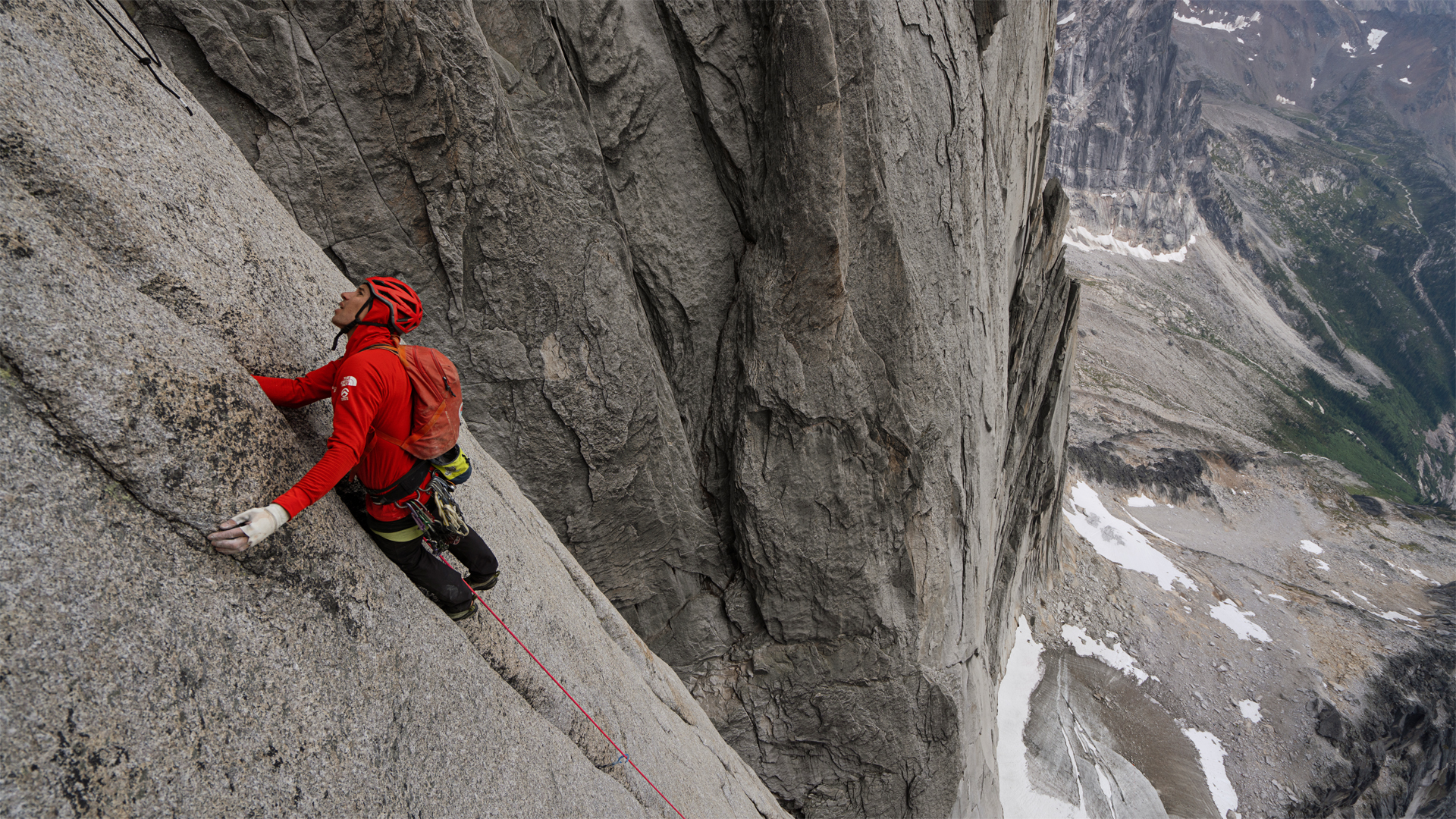The best water shoes 2025: fast-draining, quick-drying and ready to take you from the shore to the sea
We've selected the top water shoes to suit you, whether you're into swimming, kayaking, SUP, coasteering or just splashing about in the shallows
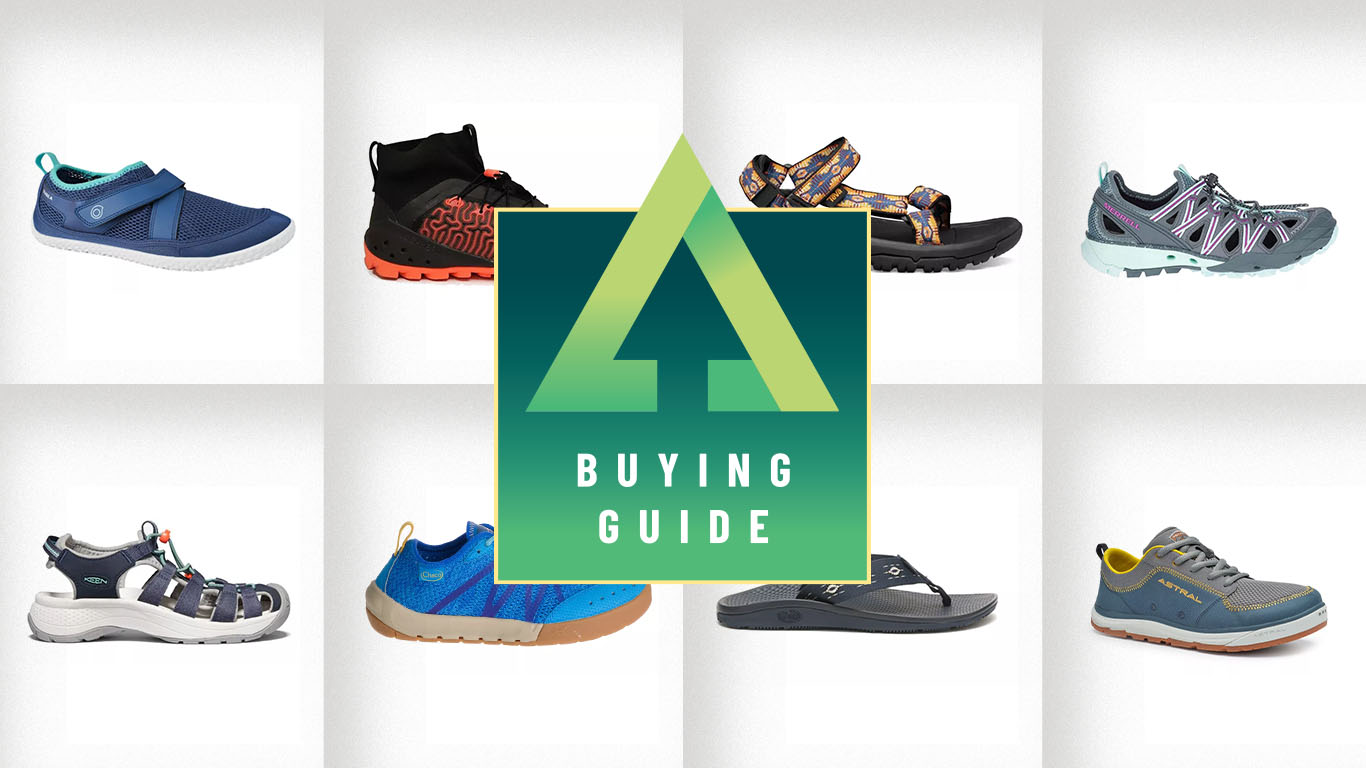
If you're something of a water baby then it's worth investing in a pair of the best water shoes. Designed to be fast drying, protective and uber-grippy, they're simply a no brainer for so many watery activities.
Whether you're into kayaking, coasteering, canyoning, exploring waterfalls, wild swimming, SUP-ing or simply exploring your local beach and its rock pools, there will be a pair to suit your needs. Here we've gathered the top choices for every kind of water sport.
From neoprene booties to synthetic shoes that share features with the best hiking shoes, water shoes come in many shapes and styles. The former are best for wild swimming, SUP-ing and kayaking, while the latter are a great option for beach walks and the cocktail bar.
We've taken to the water for a variety of activities and many different settings to collate this guide to the very best water shoes in 2025. We rate the Helly Hansen Ahiga V4 HP Sneakers as the best overall, thanks to its stylish aesthetic, eco-creds and breathability. However, every pair in the guide is included on merit and does its specific job to a high standard.
The quick list
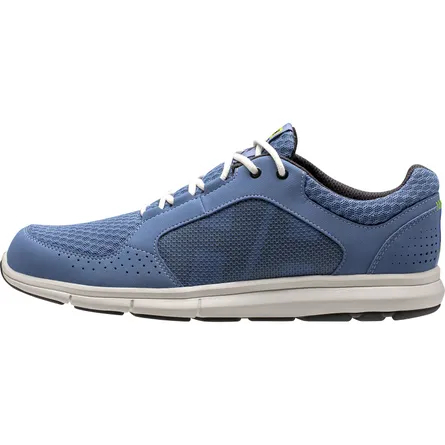
Practical, lightweight, and good looking, this water-loving sneaker is a great choice for boating.
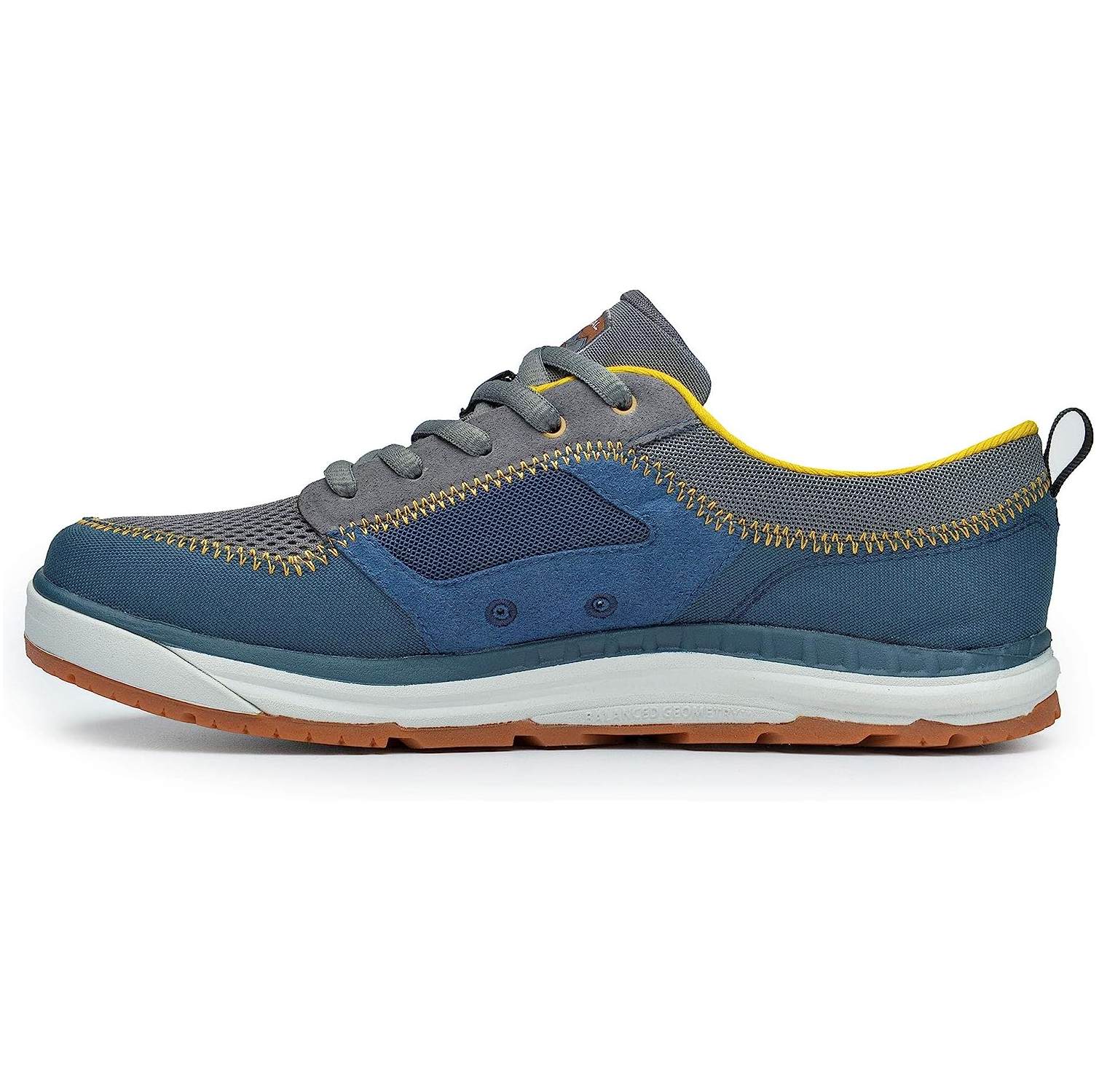
The supportive midsole makes this a good water shoe for walks, and it works well without socks.

Attractively priced, no-frills but very functional wetsuit-style booties for three-season-plus coastal capers and paddling adventures on SUPs, and in kayaks and canoes
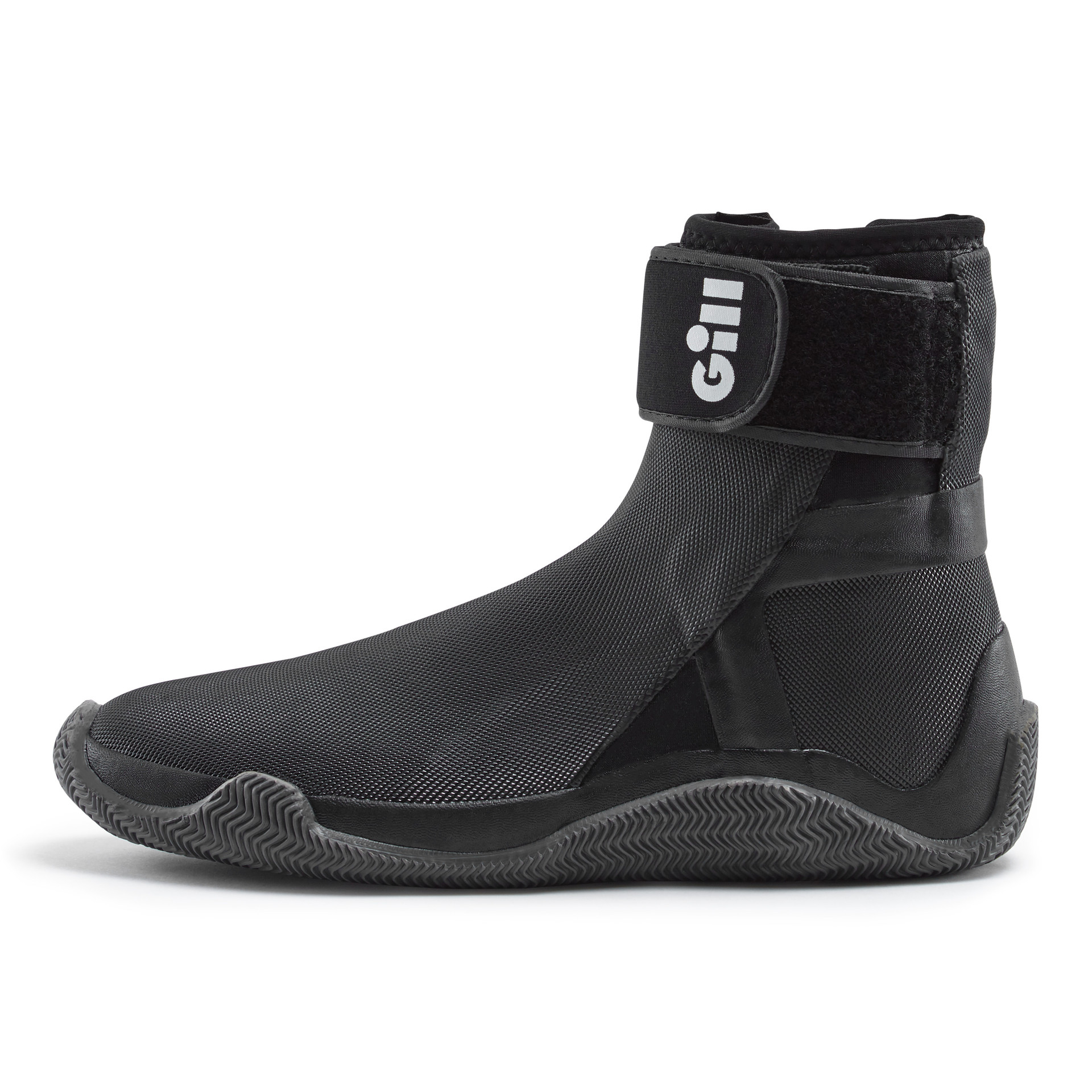
Warm and tough enough for kayaking, canyoning, canyoning and gorge scrambling all year round.
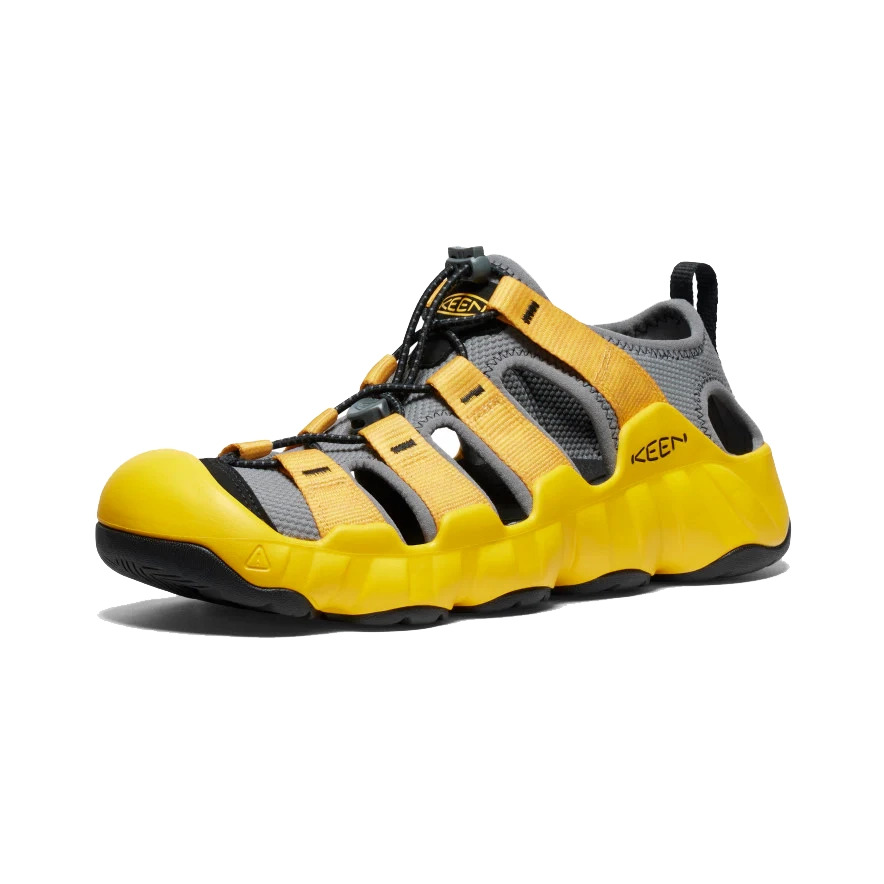
The Keen Hyperport H2 is a bouncy water shoe that'll see you through easy hikes, coastal wanders, rock pooling and fun swims. Our tester was a fan of the sturdy protective toe bumper and found them light and comfortable to wear
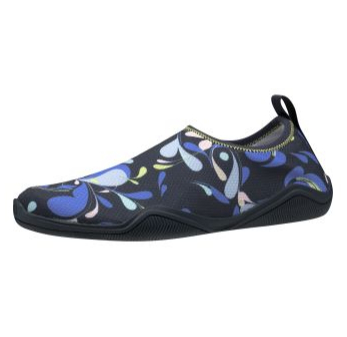
Great for slippery rocks and boat decks, this light, packable water shoe provides excellent grip. It's affordable too.

Super cushioned, with a tough toebox to protect against rocks and an extra sticky sole.

A classic design that's mainly made for land, but also handles the occasional watery encounter well.
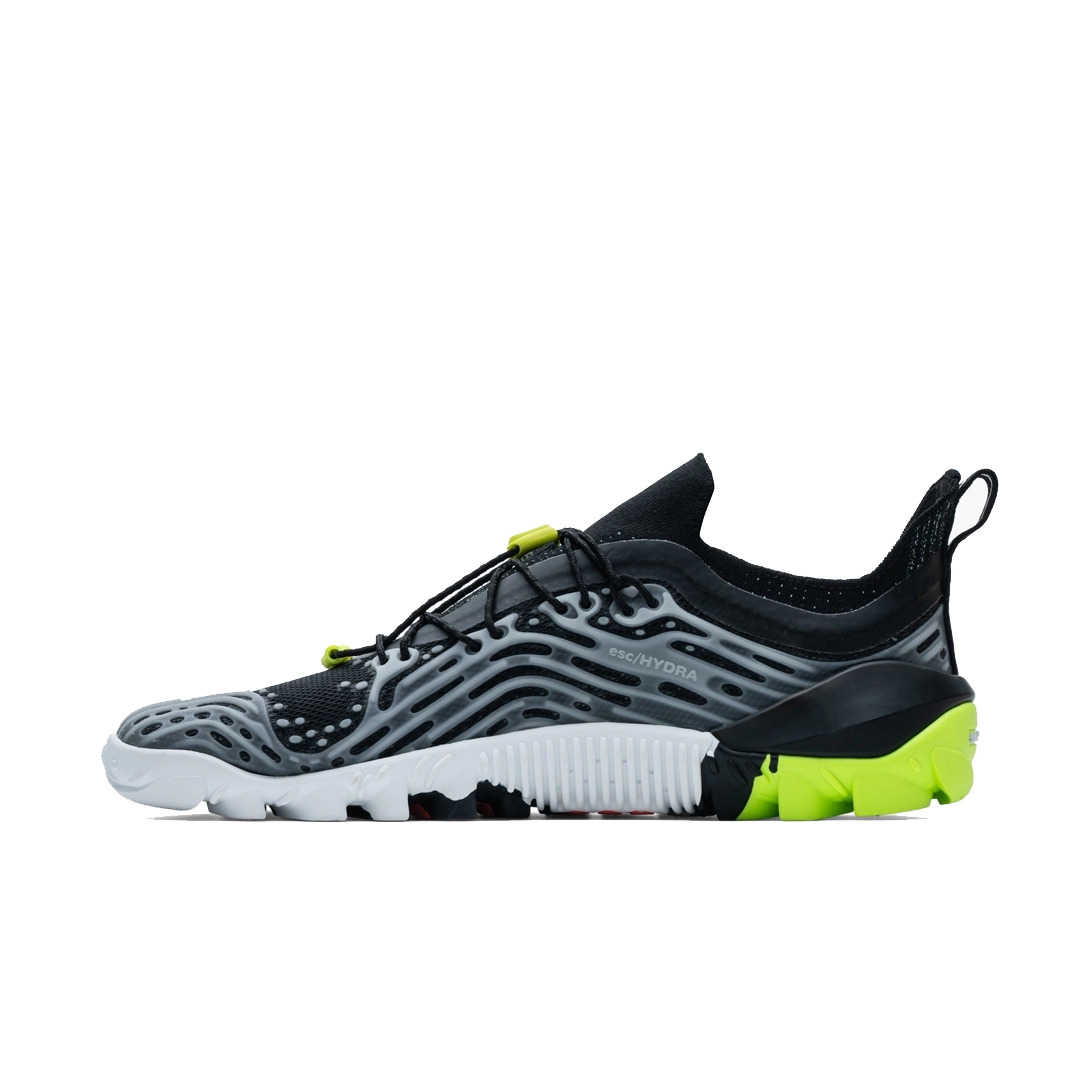
A water shoe with swimrun and trail pounding capabilities, this is a fast-draining barefoot model with plenty of traction, and a shape that will help rather than hinder when swimming
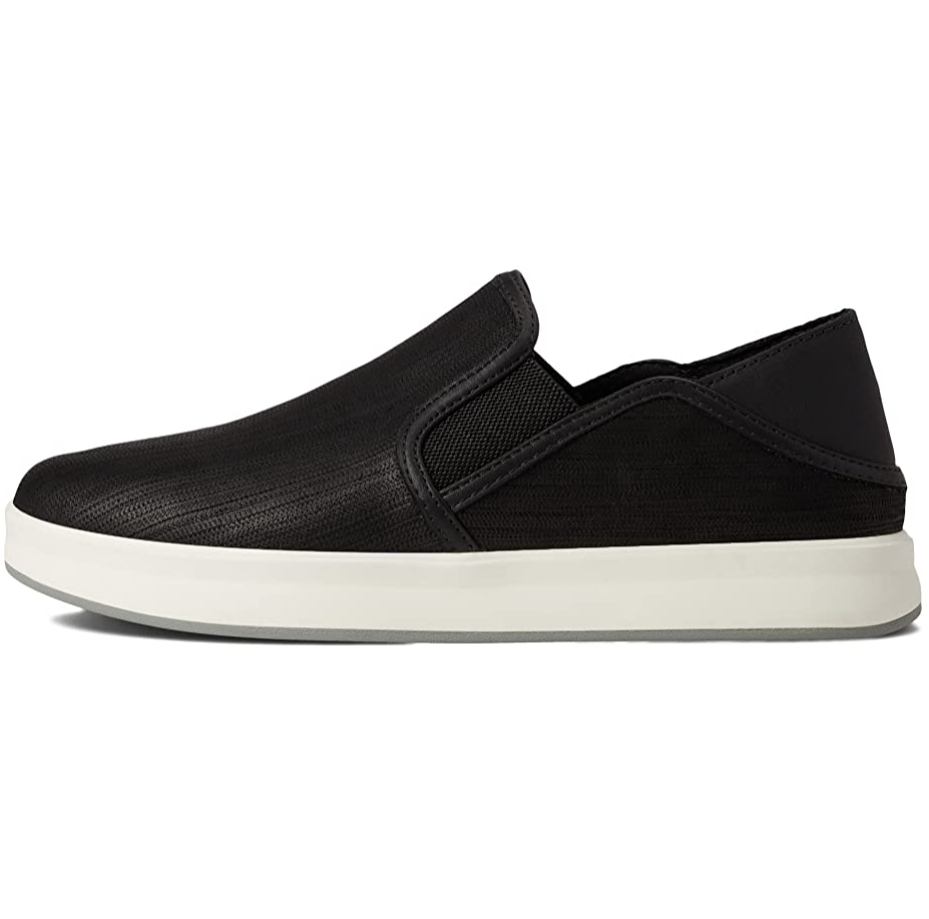
A water shoe that looks great on dry land, with a back that folds to turn it into a slide.
The best water shoes we recommend in 2025
You can trust Advnture
The best water shoes overall
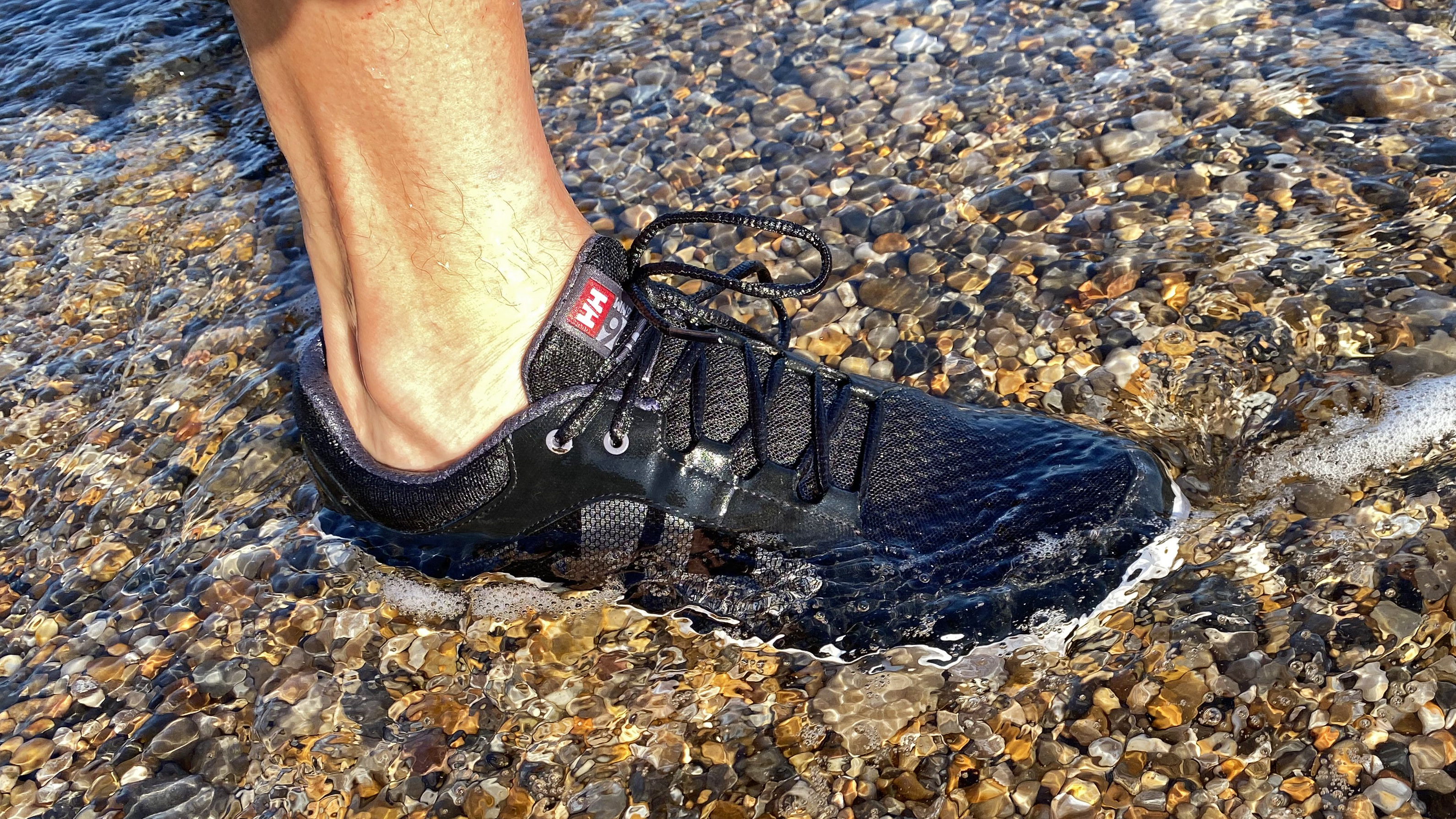
Specifications
Reasons to buy
Reasons to avoid
This nice-looking ultralight deck sneaker is supremely comfortable and nimble, ideal for wearing on yachts and other boats, as well as being versatile enough to be at home on the beach and in the bar. We found that the mesh-dominated upper is highly breathable and lets water in and out like a sieve, but it dries very quickly. Due to this, the Ahiga are best worn sans socks (an antimicrobial treatment helps prevent the build up of odor).
EVA midsole supplies support to the foot, and we found the outsoles to be impressively grippy on all sorts of surfaces. The lace eyelets extend right to the top of the tongue, so you can be sure to get a really secure and tight fit. The Ahiga are marketed for men, and for some reason the closest women’s equivalent, the Skagen F-1 Offshore, which are very similar in terms of construction and design, are significantly more expensive. The Ahiga and Skagen are both PVC free, and they are made with a significant amount of recycled material.
Read our full Helly Hansen Ahiga V4 HP Sneakers review
The best water shoes for paddling

Specifications
Reasons to buy
Reasons to avoid
With a grippy rubber sole, a supportive midsole, and quick-dry mesh with hydrophobic canvas in the shoe’s body, the Brewer (male)/ Brewess (female) 2.0 sets the standard for technical footwear for water-based recreation. It looks like a sneaker and is as comfortable as your favorite pair, but it sheds water instantly and is so tenacious on wet rocks, you’ll forget where you’re standing. Even the laces are waterproof. Thanks to a built-in sockliner, you can wear them with or without socks.
An EVA midsole cushions feet and protects them from pokey rocks, while razor-siped proprietary G.15 rubber gave us a high grip-contact that’s also non-marking. Drainage ports at the arch and outside of the foot help shed water, though most of it squishes out or evaporates through the shoe’s breathable materials. We found them to be ideal for kayaking, canoeing, rafting and SUPing, a slightly rockered sole and a sturdy midsole – combined with the great grip – also make these comfortable and practical for short walks and hikes, and perfect for adventures that involve river crossings or portaging sections. The shoes are treated with silver-based Polygiene, so they never get stinky.
Read our full Astral Brewer 2.0/Brewess 2.0 review
The best water shoes for SUP-ing
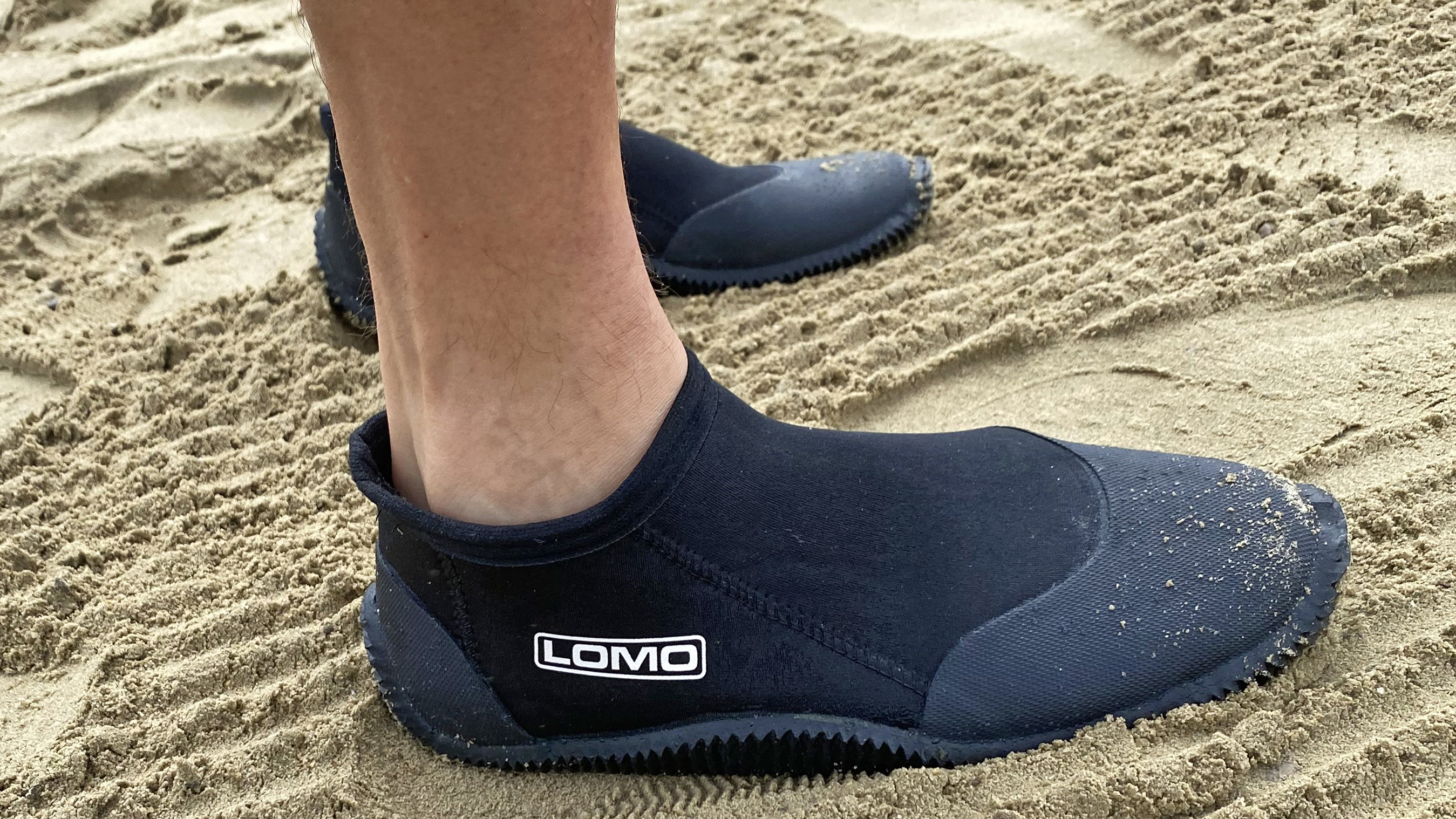
Specifications
Reasons to buy
Reasons to avoid
We found these no-nonsense watershoes from Lomo are ideal for use on the coast and along riverbanks and lake shores as the summer heat wanes and swimmers, beach explorers and paddlers start to look for a bit more coverage and thermal protection for their feet.
Although extremely attractively priced (less than half the cost, for example, of the far more minimalist Helly Hansen Crest Watermoc), these mid-height booties supply really comprehensive coverage, with a very sturdy outsole that protected us against puncture wounds from sharp shells, sticks and stones submerged in the shallows. Bristling with a series of pronounced ridges, this outsole has absolutely fantastic grip, capable of keeping you upright on the slimiest of slipways and slickest rocks during put-ins and take-outs.
The outsole also extends up the back of the heel and over the front of the toes, to guard against stubs and other knocks. And, although it’s not as tall as the chunkier Gill Marine Edge Boots, this bootie does just about cover the ankle, offering some padding to that delicate area too.
Overall, these Lomo watershoes are a really good choice for people who like to play in and around the water for most of the year.
The best water shoes for protection
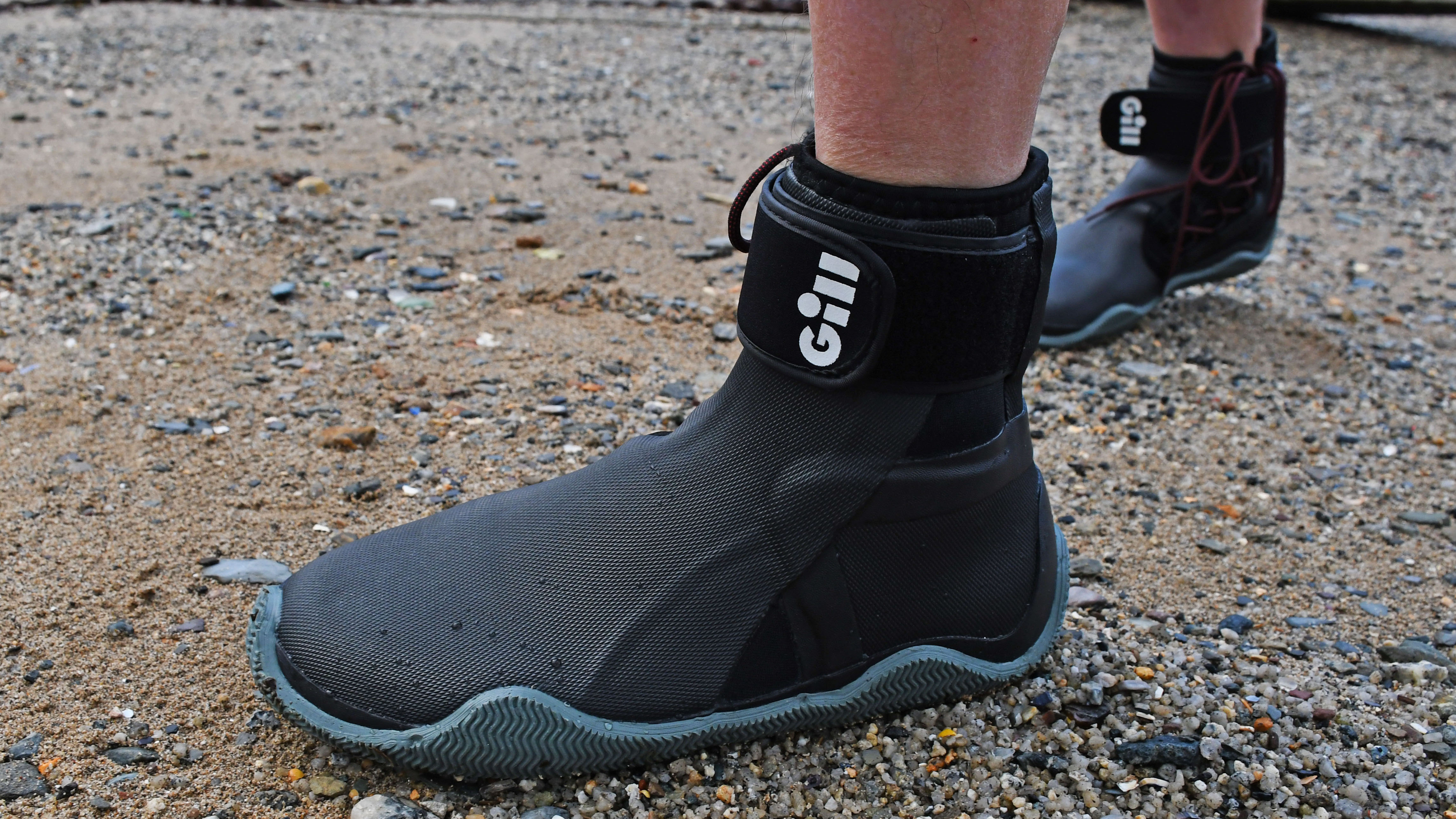
Specifications
Reasons to buy
Reasons to avoid
Made almost entirely from 4mm-thick neoprene, the Edge boots are flexible, warm and tough footwear for all manner of marine adventures throughout the entire year. We thought that the protection and grip offered by the sturdy outsoles was superb, and beyond beaches, boats and boards they are also ideal for inland outdoor activities around waterways, including all forms of kayaking and canoeing, plus canyoning and gorge scrambling.
Extending right up and over the ankle, to the lower shin, our entire foot was shielded from knocks and scrapes from sharp rocks and other obstacles. With reinforced heel, toe and bridge support built into the sole, they’re comfortable as well as protective. The boots are secured and tightened with a dual system of laces and a wide wrap-around band with Velcro fasteners – which certainly works, but we thought seemed a little over-the-top, especially as the laces are ridiculously long and end up tied in huge hoops (but you can tuck them under the Velcro band). Overall, though, these boots are great, and while they are a fairly pricey investment, the excellent construction quality means they should last for quite a few years, even if you subject them to some serious salty shenanigans.
Read our full Gill Marine Edge Boots review
The best water shoes for coastal hikes
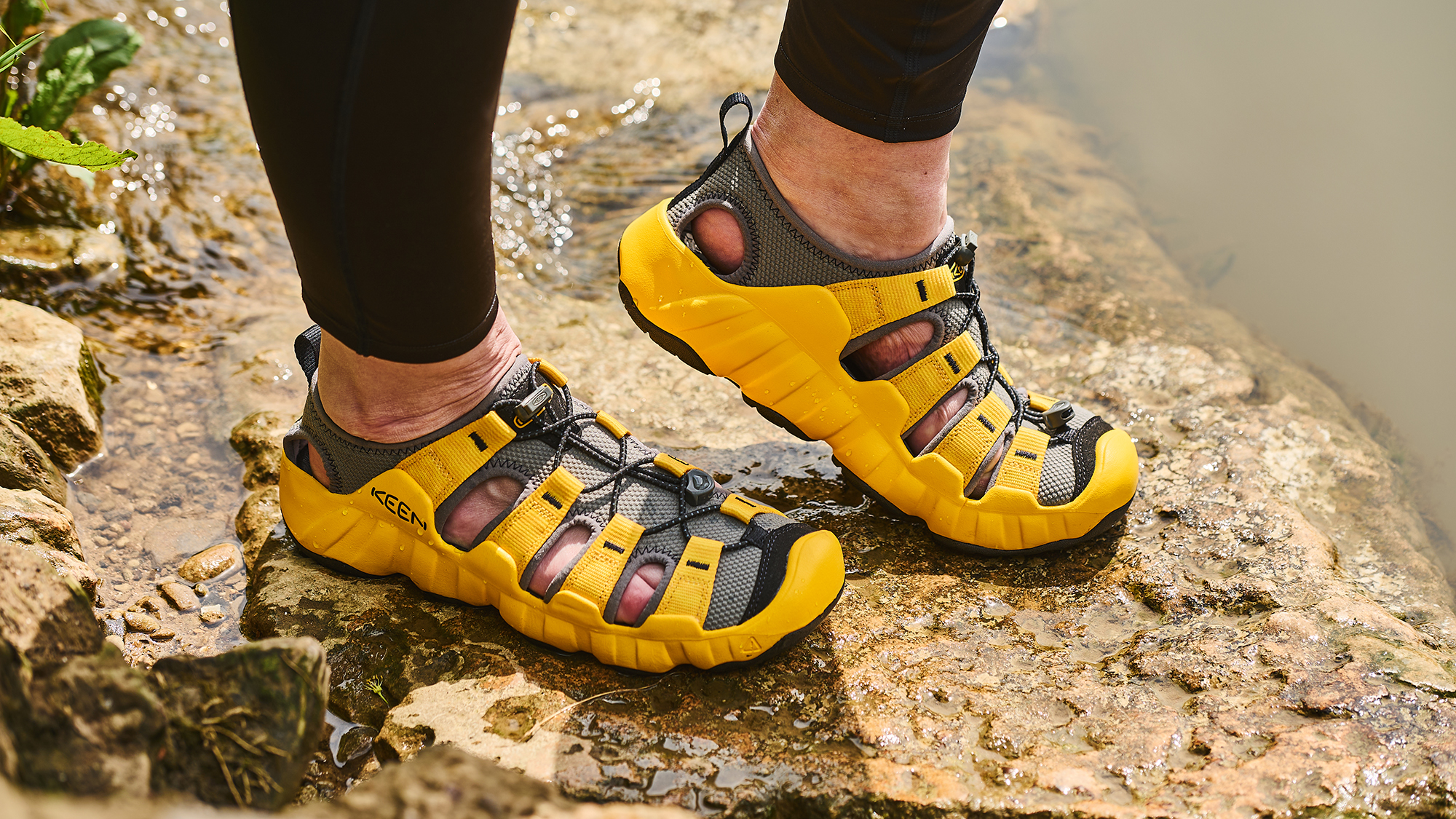
Specifications
Reasons to buy
Reasons to avoid
The Keen Hyperport H2 is a shandal designed to take you from coastal hikes to the beach without needing to change footwear. Built around a super bouncy foam-injected midsole, this is a water shoe that will put a spring in your step. Thanks so the polyester-knit and webbing upper and substantial toe bumper, it also provides a decent amount of protection against trail debris and obstacles, although obviously not as much as the best hiking shoes.
The Hyperport isn't the best choice for long swimming sessions. Its chunky shape creates a significant amount of drag in water, so it's better suited to casual swimming and wading than extended swim training. Where it really comes into its own is for those days when you're wandering cliff paths with a plan to hit the waves later.
The thick sole (the heel is 45mm / 1.77in) makes it a great choice for walking on the beach, and the multi-directional lugs on the sole do a good job of gripping on slippery surfaces like shore side boulders and seaweed covered rockpools. Our tester felt that the Hyperport H2 would work for paddle boarding for people with good ankle and knee flexion, as the extra height of the sole makes it a little more challenging to stand up onto an unstable surface than if you were wearing a flatter water shoe.
Read our full review of the Keen Hyperport H2
The best water shoes for scrambling
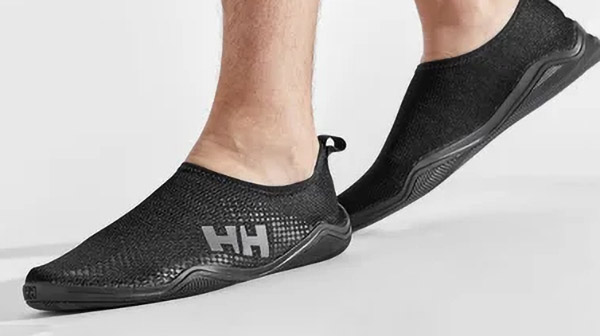
Specifications
Reasons to buy
Reasons to avoid
Sturdy, light, and super-fast to dry, there’s more to the Crest than meets the eye. This slipper-style water shoe has an EVA midsole and a flexible rubber outsole under a breathable mesh upper that’s tight-knit to keep out sand and debris. It’s also overprinted on the outside to protect the mesh from abrasion.
The low-cut Crest is free of Velcro, laces, and straps that could get caught in windsurfer rigging, paddleboard bungies, or cause pressure points in foot harnesses of any kind. The sole is siped for superb traction on wet and slippery surfaces like rocks or boat decks. And it protects from hazards like Zebra mussels, coral, and submerged junk. We advise going a half size smaller than you would normally wear for a snug fit.
Read our full Helly Hanson Crest Watermoc review
The best water shoes for rock pooling
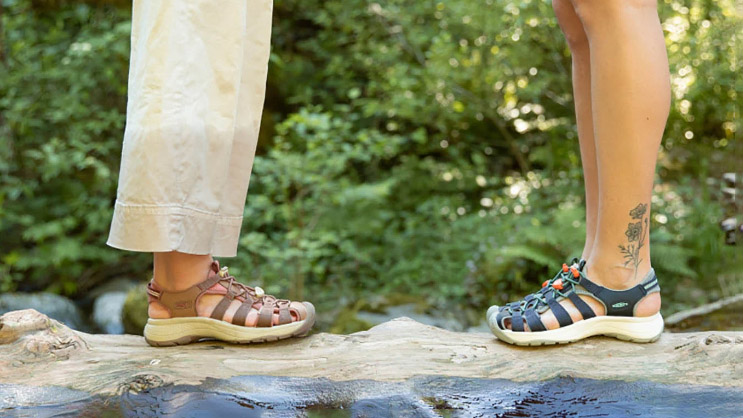
Specifications
Reasons to buy
Reasons to avoid
Keen’s hiking sandals are deservedly popular with walkers, and we’ve yet to review one of their summer shoes we didn’t like. One of our top picks is the female-specific Astoria West (men after a similar style will get on with the Clearwater Shandal).
Designed to go from trail to town to waterfront, for us the Astoria Wests stood out on test for the walking comfort they offer – oversized but very cushioned soles make these sandals feel barely there despite their middling 400g weight, and we liked the close-fitting but comfortable webbing straps, designed to let your feet breathe and quick to dry once wet.
The Astoria Wests have a wide protective rubber toe box (something Keen is known for) that’s brilliant if you encounter rocks both under the water and on shore, and their ‘Aquagrip’ soles are designed to be superbly sticky even on wet surfaces. A good do-it-all summer shandal. This design fits on the narrow side – if you have wide feet they may not suit you.
Read our full Keen Astoria West review
The best water shoes for pebbly shores
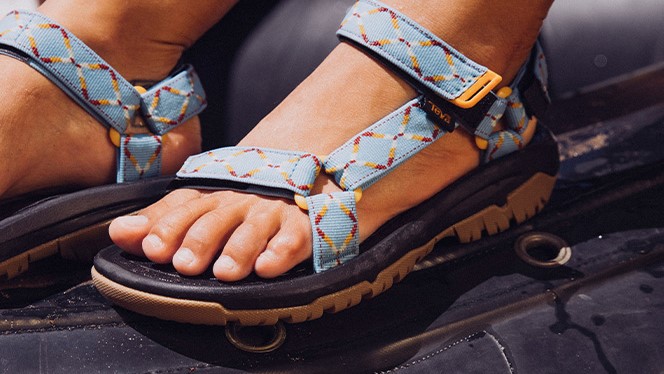
Specifications
Reasons to buy
Reasons to avoid
Teva sandals are a bit of a classic in the outdoor world, and the brand’s more technical Hurricane design is one we find ourselves reaching for again and again for summer days out and travelling in hot climates. We’ve tested these walking sandals out everywhere from river crossings in the Himalayas to hiking the South West Coast Path – they’re definitely built to last. The Hurricane’s tough, adjustable straps sit in a T-shape around the foot and are easily adjusted for a snug fit around the ankle and across the toes.
The moulded rubber sole gives good ankle support and has reliable grip even on wet slippy ground. This is more of a walking sandal you can take into water than an aquatic-specific sandal, but it’s quick to dry if you do venture into water – the only downside in water is that your toes aren’t covered. The Hurricanes also aren’t super lightweight, so you will feel you have them on when you swim. These smart sandals come in a range of bright patterned and retro designed straps as well as more subtle colorways.
Read our full Teva Hurricane XLT2 review
The best water shoes for swimrun
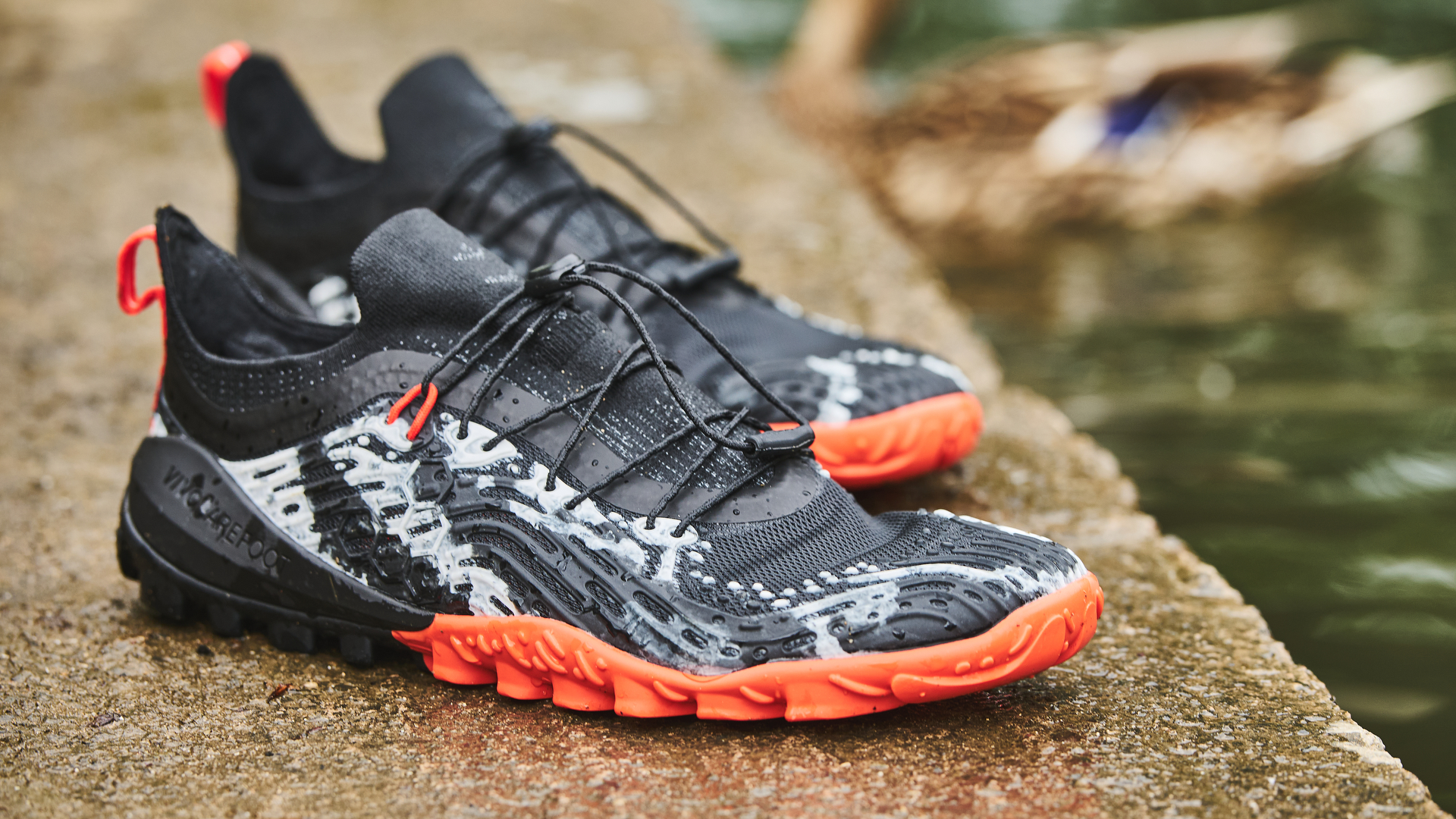
Specifications
Reasons to buy
Reasons to avoid
The Vivobarefoot Hydra ESC is a water shoe designed for the most athletic adventures. Created with input from world-level swimrun teams, this is a shoe designed for those with a competitive streak and it shows.
The Michelin soles are built for trail running, with 4mm multi-directional lugs on top of a minimal 2mm outsole. The outsoles also have a 0.8mm puncture resistant finish and our tester said she found them "reassuringly substantial" - protective against sharp rocky ground while still delivering plenty of trail feel.
These shoes really come into their own when used for swimming. The mesh uppers are fast draining and the classic barefoot last of narrow heel and wide toe box gives an almost fin-like shape, meaning that, while they do create drag just by nature of being on your feet, they also act almost like a mini training fin. They might not make you swim faster but they don't exactly slow you down either.
Our tester had some concerns about the decision not to put any backing on the lacing system on the inside of the upper, so if you're wearing these for anything other than swimming we recommend wearing socks too.
The best water shoes for hybrid sports

Specifications
Reasons to buy
Reasons to avoid
A cross between a meshy espadrille and a sneaker, the breathable, easy-to-get-into Ki’ihele is a shoe that’s ready for summer fun. The upper is breathable lined mesh, designed to keep out sand and to give feet some protection, with a drop heel that folds down, turning the shoe into a slide. The mesh pairs with lightweight canvas and sueded microfiber. Stretchy elastic panels on both sides make getting it on and off a hands-free affair.
The dual-density polyurethane footbed is built around a shock-absorbing gel insert that runs the length of the insole, and we found it was comfortably squashy during our tests. That insole overlays a fatigue-busting midsole. The Ki’hele’s non-marking wet grip rubber sole won’t slip on boat decks, beach rocks, or anything else. And they’re a shoe that gives back: For every pair purchased, OluKai donates a portion of proceeds to the Ama OluKai foundation honoring those who preserve and celebrate the cultural heritage and Aloha spirit of Hawai’i.
Read our full Olukai Ki'hele review
The best water shoes comparison table
| Shoe / Sandal | List price | Style | Weight |
| Helly Hansen Ahiga V4 HP Sneakers | $110 / £90 (UK) | Water shoe | 310g / 11oz |
| Astral Brewer 2.0/Brewess 2.0 | $125 (US) | Water shoe | 222g/7.8oz |
| Lomo 3mm Wetsuit Booties | £17 (UK) | Wetsuit Bootie | 350g / 12oz |
| Gill Marine Edge Boots | $95 (US) / £76 (UK) | Water shoe | 620g / 22oz |
| Keen Hyperport H2 | $120 (US) / £95 (UK) | Sandal / shoe hybrid | 345g / 12.17oz |
| Helly Hansen Crest Watermoc | $60 (US) / £45 (UK) | Water shoe | 153g / 5.4oz |
| Keen Astoria West | $130 (US) | Sandal / shoe hybrid | 400g / 14oz |
| Teva Hurricane XLT2 | £65 (UK) | Sandal | 450g / 16oz |
| Vivobarefoot Hydra ESC | $210 (US) / £170 (UK) | Swimrun shoe | 310g / 10.9oz |
| Olukai Ki’ihele | $140 (US) | Water shoe | 312g/11oz |
How we test the best water shoes
Our reviewers test water shoes across varied settings and pursuits, such as wild swimming, rock pooling, coasteering and canyoning. Specific features (including comfort, warmth, breathability, grip, materials used and protection) are tested against claims made by the brand, and we assess factors such as durability, environmental impact and value for money.
Meet the testers
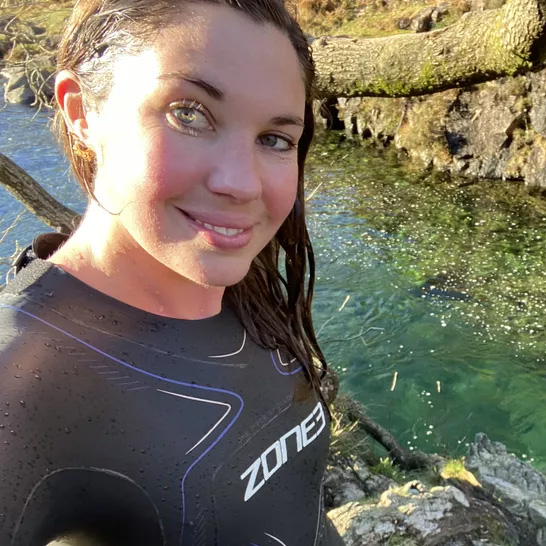
Life as a water loving, wild-swimming adventure-writer has taken Sian around the world, exploring Bolivian jungles, kayaking in Greenland, diving with turtles in Australia and, in Thailand, learning the hard way that peeing on a jellyfish sting doesn’t help. More often than not, she's seeking out a new favorite remote swim, with her wetsuit and water shoes in tow. Her blog, thegirloutdoors.co.uk, champions accessible adventures.
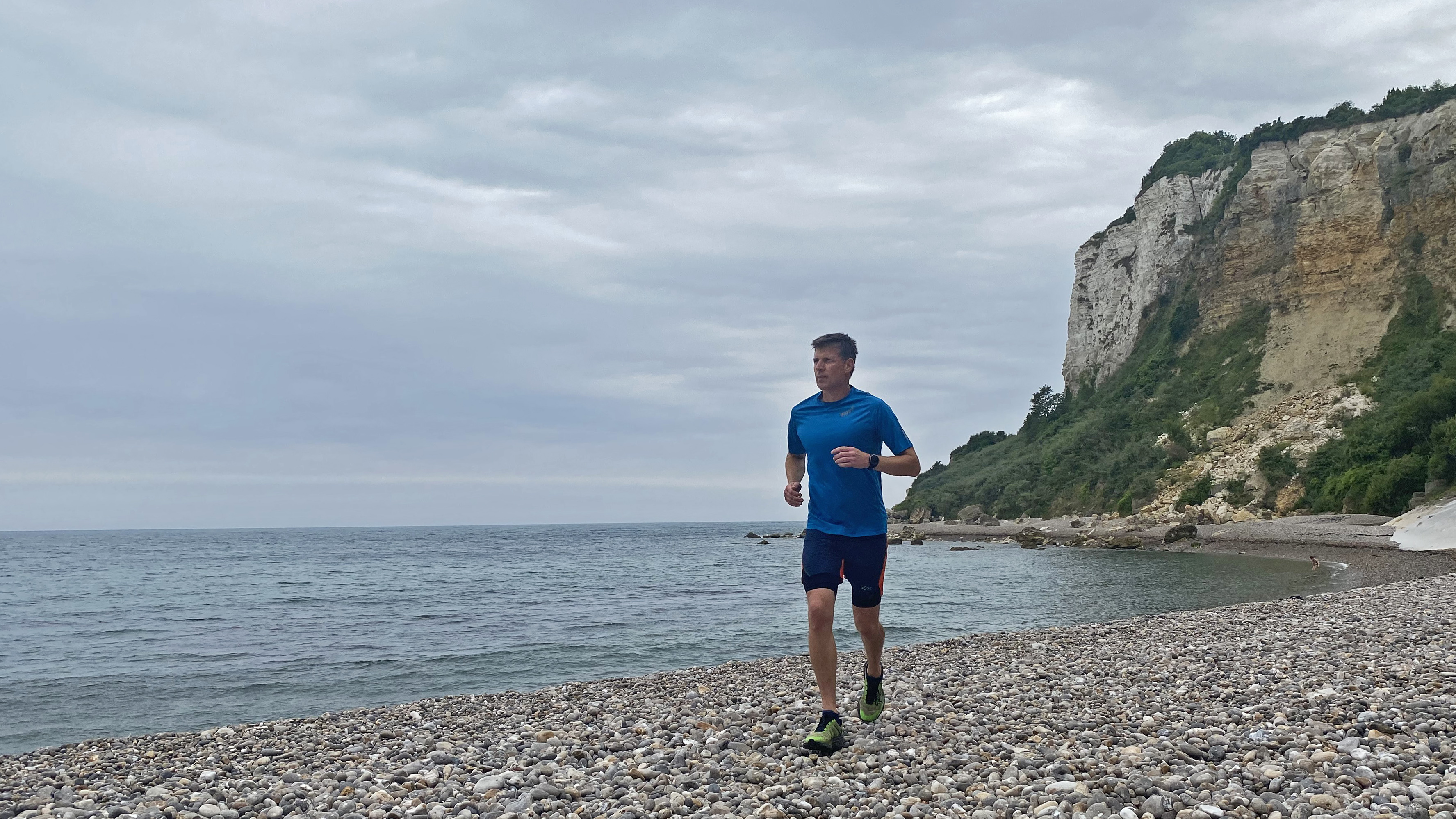
Pat has spent 20 years pursuing adventure stories on both land and sea. En route he’s canoed Canada’s Yukon River and can often be found exploring the English South West Coast by boat, on foot or with an SUP beneath his feet. He’s authored walking guides to Devon and Dorset, and once wrote a whole book about Toilets for Lonely Planet.
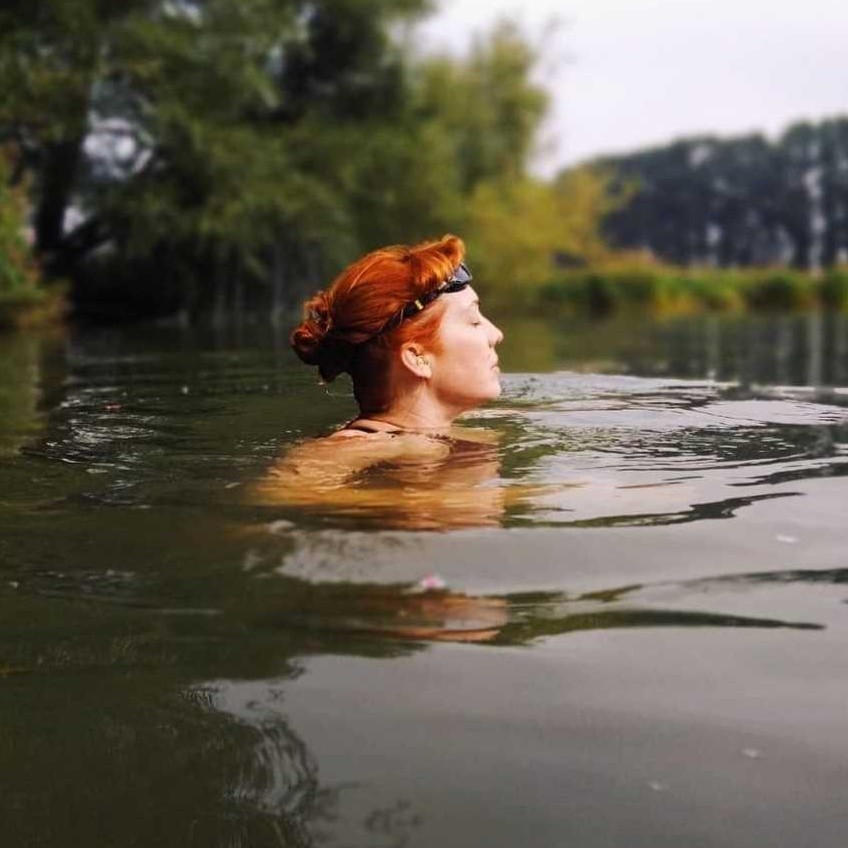
With a background in bikepacking and mountain-bike journalism, Rosee Woodland rediscovered a love for wild swimming ten years ago and is now a veteran of many long-distance river events, including the Dart 10k, which she has swum three times. She is a qualified swim coach, and learned to freedive in Bermuda, where she had a narrow miss with a Portuguese Man O' War.

Hardcore, Vermont-based adventurer Berne Broudy knows a thing or two about amphibious adventures and she can often be found scrambling wet rocks with her favorite pair of water shoes. She’s also worked to help brands clean up their materials and manufacturing, and has had guns pulled on her in at least three continents.
How to choose the best water shoes
As you can see, there is quite a degree of variance when it comes to footwear for aquatic adventures, so what are the best water shoes for you? Following are some considerations we’d recommend chewing on before you buy and some frequently asked questions surrounding water shoes.
Water shoe or aquatic sandal?
Our round-up includes two kinds of water-ready footwear – the best water shoes and the best water sandals. The former are snug-fitting pull-on booties designed to be worn only in the water rather than for walking in, and are ideal for swimming and aquatic adventures such as canyoning and coasteering.
Water-friendly sandals (and ‘shandals’ – sandal/shoe hybrids with more coverage than a sandal) are usually designed to be hiked in but can also be worn in water, and this are great for walking near water, river crossings, rockpooling and wearing on holidays where you might be in and out of the water all day. They’re quick-drying but usually heavier than water shoes. If you do want to the best water shoes for deep water, we recommend picking a design with toe protection rather than open toes. Some even double up as great walking shoes or as some of the best trail running shoes.
As a general rule, both water shoes and sandals are flexible enough to squeeze into a 3 to 5-litre dry bag.
Soles
Good grip is essential if you’re planning on wearing your new water shoes or sandals on rocks or wet terrain. Look for a design with a tough rubber sole that has deep ‘lugs’ or indentations that grip the ground as you walk. A solid rubber toe cap is also a good choice for protecting your toes when you’re on rockier ground or when walking immersed in water, such as when coasteering.
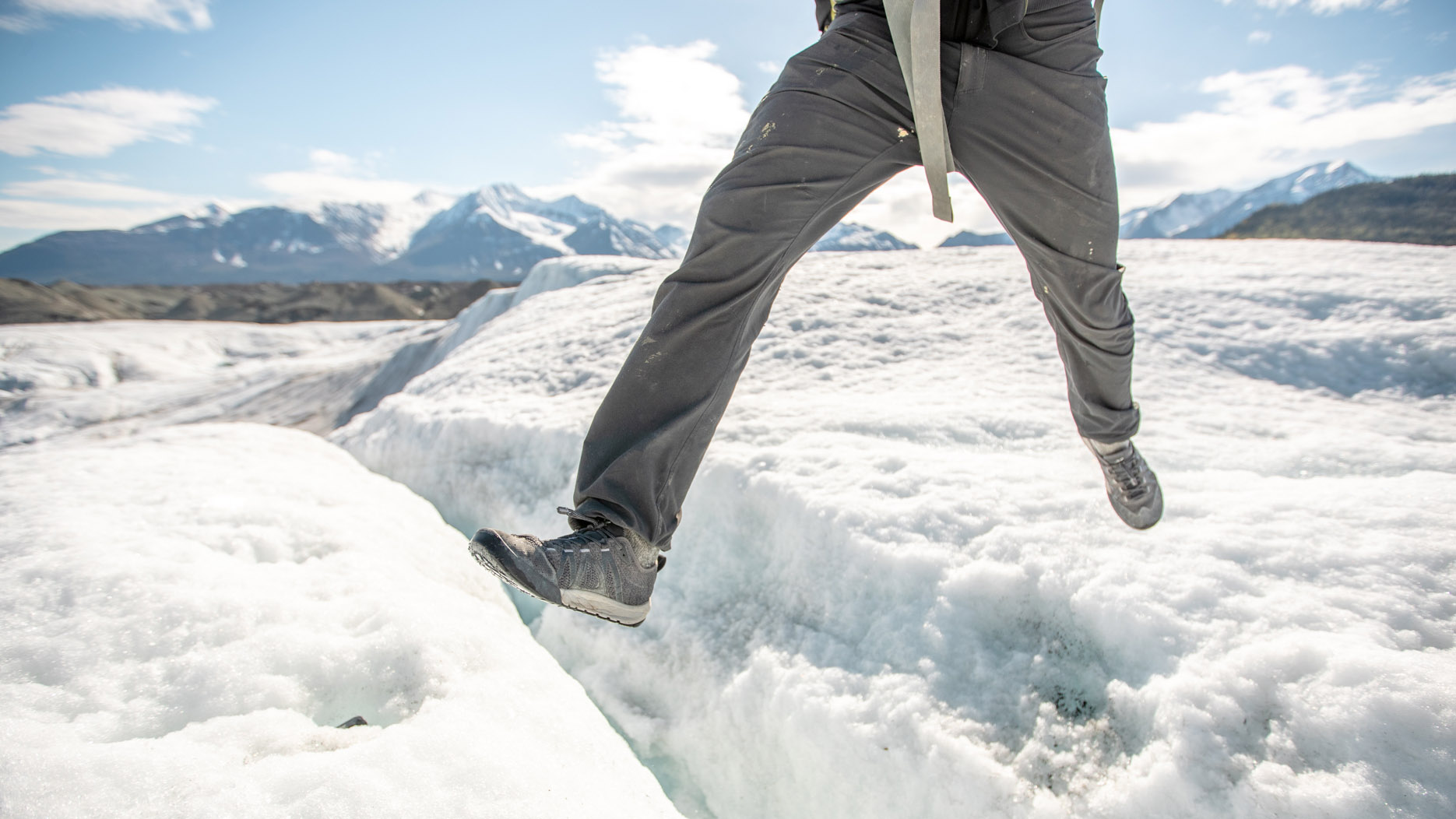
Fit and looks
Your new shoes or sandals may feel more casual than technical hiking boots, but it’s just as important that they fit you well, to help you walk confidently in and around water and to prevent blisters, avoid chafing and stop discomfort if you’re walking in them. Try on your new shoes or sandals and check they fit snugly, and that if they are adjustable that you can strap or bungee them tightly for a stay-put fit.
Make sure there’s no tightness or rubbing, especially around the toes and heels. Hiking sandals come in all kinds of finishes, from smart leather to neoprene, but we recommend picking a fabric or nylon material, as these tend to be tough when walking but quick to dry if you do get them wet. If you’re choosing a water-specific shoe, performance is your only real concern, but if you want a water sandal you can also wear on dry land, it makes sense to pick a style you like the look of, and can wear in town as well as in the great outdoors.
Are water shoes a good idea?
If you're someone who spends a lot of time at the beach or enjoys water sports or pursuits like canyoning or coasteering, water shoes are a great idea. Likewise, they make a great additional to your suitcase on summer vacations.
Water shoes are designed to perform better both when wet and when negotiating wet ground than standard footwear. Their outsoles are specifically tailored to give grip on slippery terrain and some pairs are absolutely ideal for wet, rocky scrambles. A standard pair of water shoes will also be constructed from fast drying materials, unlike a decent pair of hiking shoes which, once wet, will likely hold onto the water for some time, particularly if they've got a Gore-Tex membrane (or similar).
What are the best water shoes for running on the beach?
Of the water shoes featured in our roundup, we'd recommend the Astral Brewer 2.0 as a good option for running on the beach. They're not as supportive as a dedicated running shoe, but their midsole does a decent job and is protective too, while the rubber sole is grippy when moving between sand and rock. Better still, their silver-based Polygiene treatment negates any pongy odors.

What shoes should you wear to a waterpark?
We've all done it (probably when we were kids). Possessed by the excitement of the wave machine or the swirling slides, we've broke into a run along the poolside concrete at a waterpark. It's not something we'd recommend, as these surfaces can be horrendously slippy and concrete isn't known for its cushioned qualities. Care must be taken even when walking.
Of course, going barefoot is one option. But then, when the midday sun is beating down on said concrete, it can get pretty hot. Plus, no one likes the sharp sensation of stepping on an errant stone.
So, grippy water shoes, shandals and flip flops all make for a great option at a waterpark and, thanks to their fast-drying materials, you can wear them in the water too. Just make sure, whatever you choose, that they're well fastened so you don't lose them on the Lost Canyon ride.
Do people wear water shoes in the pool?
Unlike wild swimming scenarios, there are no spiky rocks or prickly vegetation to contend with at your local pool. So, protection is less of an issue. However, some people choose to wear minimalist water shoes or neoprene socks to shield their feet from chemicals and the like.
Should you size up or down in water shoes?
Water shoes often have a little stretch in their material so, if you're usually in between sizes, it's always worth going down a size. Too big and the shoe won't be snug enough to your foot, which isn't what you want in the water.
What are the best materials for water shoes?
Fast drying, yet strong and protective materials are best for water shoes.
Neoprene, the standard material used in wetsuits, is common in wetsuit style booties. This synthetic rubber is resistant to temperature changes and, crucially, is totally waterproof.
For more sneaker-like water shoes, synthetic mesh materials make for fast drying pairs that drain effectively but don't let other debris into the shoe. Shoes containing Nylon, polyester, polyurethane, EVA and even PVC all feature in our roundup.
Just like hiking footwear, the outsoles are usually made of one form of rubber or another, to give excellent traction on both wet and dry ground.
Advnture Newsletter
All the latest inspiration, tips and guides to help you plan your next Advnture!
An award-winning travel and outdoors journalist, presenter and blogger, Sian regularly writes for The Independent, Evening Standard, BBC Countryfile, Coast, Outdoor Enthusiast and Sunday Times Travel. Life as a hiking, camping, wild-swimming adventure-writer has taken her around the world, exploring Bolivian jungles, kayaking in Greenland, diving with turtles in Australia, climbing mountains in Africa and, in Thailand, learning the hard way that peeing on a jellyfish sting doesn’t help. Her blog, thegirloutdoors.co.uk, champions accessible adventures.
- Berne Broudy
- Pat KinsellaAdvnture Consulting Editor
- Rosee WoodlandEditor

